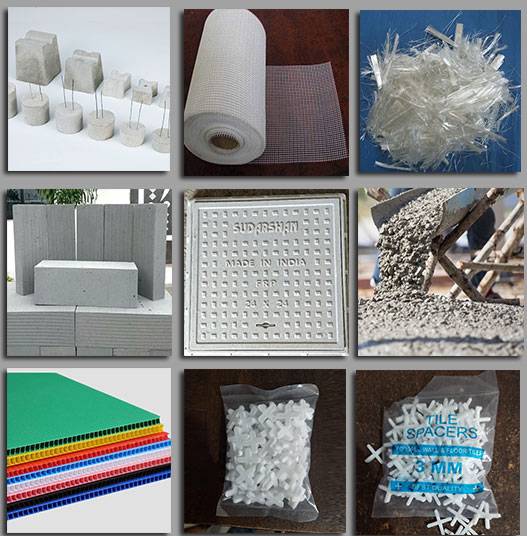When it comes to constructing durable and reliable concrete structures, every detail counts. One such detail that often flies under the radar is the use of concrete spacers. These essential components play a pivotal role in maintaining the integrity and performance of reinforced concrete.
Concrete spacers are primarily designed to ensure that reinforcing bars (rebar) are positioned accurately within the concrete forms. Proper placement is crucial, as rebar helps distribute loads and resist tensile forces. Without adequate spacing, rebar could be improperly embedded, leading to compromised structural integrity.
Available in various materials—plastic, metal, and concrete—spacers serve different needs. Plastic spacers are popular for their resistance to corrosion and ease of handling, making them ideal for many residential projects. On the other hand, metal spacers provide added durability for heavier applications. Concrete spacers, often used for larger installations, offer robust support and stability.
The correct positioning of rebar is vital for achieving the necessary concrete cover, which protects the steel from environmental factors that could lead to corrosion. Adequate cover not only extends the life of the structure but also enhances safety and performance. Moreover, proper spacing allows concrete to flow evenly around the rebar, ensuring strong bonding and effective load transfer.
Installing concrete spacers requires careful attention to detail, typically done at regular intervals as specified by engineering plans. This meticulous approach not only contributes to structural strength but also impacts the overall quality of the concrete pour.
In summary, concrete spacers may seem like small components, but they are essential for ensuring that concrete structures are built to last. By understanding their importance, builders and engineers can create safer, more durable constructions that stand the test of time. So next time you see a concrete project, remember the crucial role that these unsung heroes play!
An organization chart, or org chart, is a visual representation of a company’s structure, showing the relationships and hierarchy among its roles, departments, and employees. Typically presented as a diagram, it illustrates who reports to whom, the flow of information, and how various teams and functions interconnect within the organization.
Importance of Organization Charts in Business
- Clarity and Structure: Org charts provide a clear overview of the organizational structure, helping employees understand their roles, responsibilities, and reporting lines. This clarity can enhance efficiency and reduce confusion.
- Communication Flow: By mapping out reporting relationships, org charts facilitate better communication within the organization. Employees can easily identify who to approach for specific issues or information, streamlining interactions.
- Role Definition: Org charts help define roles and responsibilities, ensuring that everyone knows their tasks and how they contribute to the company’s goals. This can enhance accountability and performance.
- Resource Allocation: Visualizing the organizational structure allows management to assess resource allocation more effectively. It can highlight redundancies or gaps in staffing, guiding decisions on hiring, training, and development.
- Strategic Planning: Org charts are valuable tools in strategic planning. They help identify potential leaders and assess the organization’s capacity to meet future challenges or changes in the market.
- Onboarding and Training: For new employees, org charts serve as a helpful onboarding tool, providing a snapshot of the company’s hierarchy and key personnel, making it easier to integrate into the team.
- Change Management: During periods of change, such as restructuring or mergers, org charts can help communicate new reporting lines and relationships, easing transitions and minimizing resistance.
In summary, organization charts are essential for promoting clarity, efficiency, and effective communication within businesses, ultimately contributing to their success and adaptability in a competitive environment.
Concrete spacers are essential components used in construction, particularly in reinforced concrete applications. Their primary purpose is to maintain the correct position and spacing of reinforcing bars (rebar) within concrete forms. Proper placement of rebar is crucial for ensuring the structural integrity and strength of concrete structures, as it helps distribute loads and resist tensile forces.
Spacers come in various materials, including plastic, metal, and concrete. Plastic spacers are popular due to their resistance to corrosion and ease of handling, while metal spacers offer greater durability in certain applications. Concrete spacers are often used for heavier loads and larger installations, providing a robust solution for maintaining rebar alignment.
These spacers are designed to ensure that the rebar is embedded at the correct depth, which is vital for achieving the necessary cover. The cover protects the rebar from environmental factors that could lead to corrosion, enhancing the longevity of the structure. Additionally, maintaining proper spacing helps facilitate the flow of concrete around the rebar, promoting better bonding and load transfer.
In terms of installation, spacers are typically placed at regular intervals along the length of the rebar and should be positioned according to engineering specifications. This process not only contributes to structural performance but also affects the overall quality of the concrete pour.
Overall, concrete spacers play a critical role in reinforcing concrete structures, ensuring they meet safety standards and perform effectively under various loads. Their use can ultimately lead to more durable and reliable constructions, making them an indispensable tool for builders and engineers alike.

